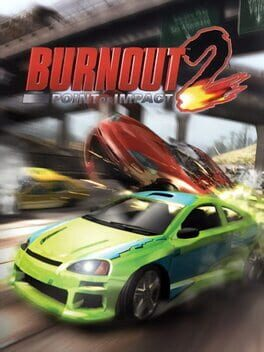Trivia Browser
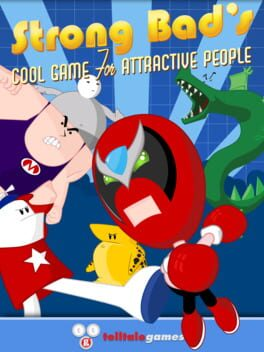
▲
1
▼
According to Mike and Matt Chapman, a representative of Sega of America offered them the chance to make a game based off Homestar Runner, but they declined their offer because they were not offered creative control over the game's development.
They were later approached by Telltale Games who offered more creative freedom and they both believed the episodic format would work better for the characters of Homestar Runner, leading to the creation of Strong Bad's Cool Game for Attractive People.
"There was a dude from Sega of America awhile ago that we were kinda just talking to. I was like, 'Is there any way that this wouldn’t just be put into the factory and stuck out on the other end with something that looks kinda like our characters?' And the guy was like, 'Ehhhn, probably not.' He was very up front, and we were like, 'Well thanks for being honest, we’ll pass.'"
They were later approached by Telltale Games who offered more creative freedom and they both believed the episodic format would work better for the characters of Homestar Runner, leading to the creation of Strong Bad's Cool Game for Attractive People.
Company: Valve
▲
1
▼
 In December of 2012, Chris Prynoski, founder of the American animation studio Titmouse, Inc., posted several hashtags on Twitter hinting at a collaboration with Valve before posting a picture of himself with Gabe Newell in Titmouse's offices. The collaboration was most commonly speculated to be a video game based off of the Titmouse-animated Cartoon Network series "Megas XLR". In August of 2015, Prynoski clarified that the collaboration was scrapped due to licensing problems.
In December of 2012, Chris Prynoski, founder of the American animation studio Titmouse, Inc., posted several hashtags on Twitter hinting at a collaboration with Valve before posting a picture of himself with Gabe Newell in Titmouse's offices. The collaboration was most commonly speculated to be a video game based off of the Titmouse-animated Cartoon Network series "Megas XLR". In August of 2015, Prynoski clarified that the collaboration was scrapped due to licensing problems.
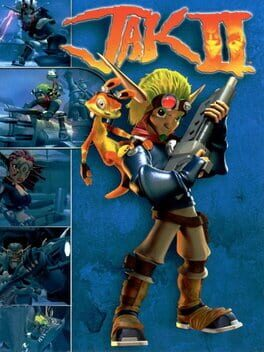
▲
1
▼
 There is a glitch whenever Jak walks in front of a mirror that causes a slightly different model of Jak with dark grey horns to appear alongside the "reflected" second model of the room, initially suggesting that Jak was used as a test model for shaping Dark Jak's horns. However, a 2003 promotional contest advertisement hosted by Cartoon Network's programming block Toonami features a higher resolution model of Jak with white horns instead, suggesting that the model sent to Cartoon Network still had the horns on them and they just altered the model for the advertisement, or that Jak was originally supposed to have visible horns like Dark Jak.
There is a glitch whenever Jak walks in front of a mirror that causes a slightly different model of Jak with dark grey horns to appear alongside the "reflected" second model of the room, initially suggesting that Jak was used as a test model for shaping Dark Jak's horns. However, a 2003 promotional contest advertisement hosted by Cartoon Network's programming block Toonami features a higher resolution model of Jak with white horns instead, suggesting that the model sent to Cartoon Network still had the horns on them and they just altered the model for the advertisement, or that Jak was originally supposed to have visible horns like Dark Jak.
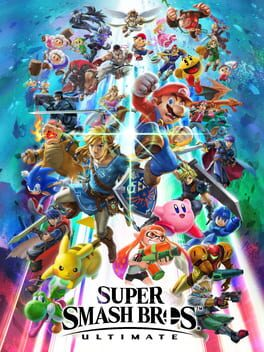
▲
1
▼
The plot of the Adventure Mode: World of Light, in which Kirby is the sole survivor of a cataclysmic invasion and must rescue the other fighters, was actually series director Masahiro Sakurai's original vision for the plot of Super Smash Bros. Brawl's Adventure Mode: The Subspace Emissary.
This early storyline was mentioned during a 2008 Iwata Asks interview:
"I had envisioned a more serious tone for the story. Something with some misfortune like a single character escaping total annihilation of his squadron and then fighting back while rounding up his allies."
It should be noted however that Spoiler:this early storyline would be implemented somewhat closer to the end of The Subspace Emissary anyway when Tabuu decimates every fighter turning them back into trophies, while Kirby, Luigi and Ness are revived in separate locations thanks to the three Dedede Brooches.
This early storyline was mentioned during a 2008 Iwata Asks interview:
"I had envisioned a more serious tone for the story. Something with some misfortune like a single character escaping total annihilation of his squadron and then fighting back while rounding up his allies."
It should be noted however that Spoiler:this early storyline would be implemented somewhat closer to the end of The Subspace Emissary anyway when Tabuu decimates every fighter turning them back into trophies, while Kirby, Luigi and Ness are revived in separate locations thanks to the three Dedede Brooches.
Collection: Project DIVA
This trivia has been marked as "Not Safe for Work".
It may not be appropriate for all visitors and definitely isn't appropriate for work or school environments.
Click here to unhide it.
It may not be appropriate for all visitors and definitely isn't appropriate for work or school environments.
Click here to unhide it.
▲
1
▼
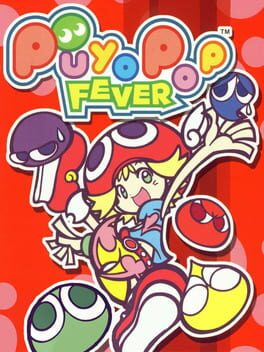
▲
1
▼
In the Dreamcast version, despite having only been released in Japan, the entire English localization is present in the game, even retaining the English title "Puyo Pop Fever", and can be toggled from the Options menu. This hints at a possible Western release of the Dreamcast version that never materialized due to the discontinuation of the console by the time the game was released elsewhere, making it the last Dreamcast game developed by Sonic Team, as well as the last first-party Sega title released on the platform. The Dreamcast version is also the only version of the game to use sprites instead of 3D models.
Franchise: Ace Attorney
▲
1
▼
 One of the primary Western influences of Ace Attorney is the American crime drama series "Columbo", of which series creator Shu Takumi is a professed fan, and who based his character profiles on the sharpness and secrecy of Lieutenant Columbo:
One of the primary Western influences of Ace Attorney is the American crime drama series "Columbo", of which series creator Shu Takumi is a professed fan, and who based his character profiles on the sharpness and secrecy of Lieutenant Columbo:"I don't touch upon Phoenix's past in the games, and the players don't even know where his parents are. Fans often ask me about the birthdate of a character, or their bloodtype or favorite food, but I don't talk about them on purpose. On the other hand, my own personality might be shining through my characters... In the game, Phoenix's thoughts are shown as monologue, but those inner monologues are just my own, personal thoughts. So when people say "Phoenix is actually quite sarcastic", they're actually talking about me (laugh)."
In the 2015 interview the above quote came from, Takahiro Ookura, writer of the Japanese crime drama series "Enter Lieutenant Fukuie", commented afterwards:
"I can feel the influence of "Columbo" in "Ace Attorney". For example, there's the thing with the IV drops in "Turnabout Succession", episode 4 of "Ace Attorney 4". I won't go into details, but the part where it goes "the only way you can know about this if you were there at that time", that's a type of logic often used in "Columbo"."
Additionally, the character design for Detective Dick Gumshoe is likely modeled off of Columbo's actor Peter Falk; Gumshoe's squint and uneven eyebrows mirror those of Falk, whose signature squint was the result of using an artificial right eyeball stemming from a childhood eye surgery.
Franchise: Mario
▲
1
▼
In the Super Mario World official guidebook interview, the game's composer Koji Kondo was asked how he came up with Mario's main theme, and revealed that it was originally very different, and went through multiple iterations. He commented:
"My first image was of “walking around an open grassy field.” That got me thinking about how carefree it must feel, and I wrote a relaxed, light melody to match. However, when I played it back alongside the actual game, it didn’t match the speed of the game or its rhythm at all! I tried adding a swing feel to it, but many people told me this made the melody sound weird, so that was out too. After trying this and that, I came up with the idea of a “cha cha cha” melody, and it all expanded from there."
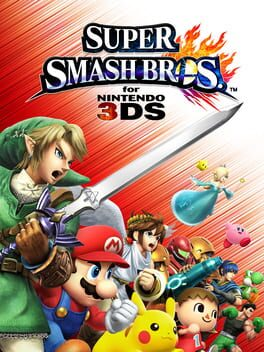
subdirectory_arrow_right Super Smash Bros. for Wii U (Game)
▲
1
▼
A potential stage based on Super Mario Land was considered for the Nintendo 3DS version to represent the Game Boy. However, a stage based on Kirby's Dream Land was used instead for unknown reasons (the stage was renamed to Dream Land GB in Super Smash Bros. Ultimate to avoid confusion with another stage already named Dream Land).
A reversal of this kind also happened in the Wii U version, where a stage based on Kirby's Epic Yarn was considered, but was revamped into a stage based on The Great Cave Offensive from Kirby Super Star after the development team heard about the then-upcoming Wii U game Yoshi's Woolly World.
A reversal of this kind also happened in the Wii U version, where a stage based on Kirby's Epic Yarn was considered, but was revamped into a stage based on The Great Cave Offensive from Kirby Super Star after the development team heard about the then-upcoming Wii U game Yoshi's Woolly World.
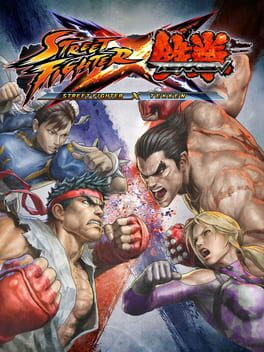
▲
1
▼
According to the PlayStation Blogcast with Seth Killian, Nathan Drake from the Uncharted series nearly got in the game.
He commented: “We were committed to try and provide some extra content to Sony and we were excited about looking at the different roster and seeing who was out there, and you know you’ve got all sort of cool characters like Nathan Drake, but you know Nathan Drake has kind of a nice Han Solo kind of everyman and he’s a comical guy but the Japanese team got really excited about Cole and the flexibility of his powers, projectiles, grabs, and all sorts of cool stuff.”
He commented: “We were committed to try and provide some extra content to Sony and we were excited about looking at the different roster and seeing who was out there, and you know you’ve got all sort of cool characters like Nathan Drake, but you know Nathan Drake has kind of a nice Han Solo kind of everyman and he’s a comical guy but the Japanese team got really excited about Cole and the flexibility of his powers, projectiles, grabs, and all sorts of cool stuff.”
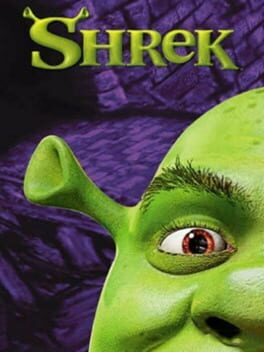
▲
2
▼
The original Xbox release of Shrek is noted as being the first commercial game to use "deferred shading," a technique where light is only calculated for the pixels it actually interacts with, meaning multiple light sources can be used at a lower cost than standard shading techniques and allowing the game to better imitate the ambient lighting of the original film. This technique would later be seen in Battlefield 1942, another game developed by DICE and released the following year.
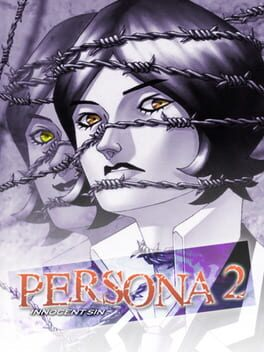
▲
1
▼
In The PlayStation magazine interview with the game's art designer Kazuma Kaneko, he was asked about how the game's title 'Sin' (Persona 2: Innocent Sin) and the main theme of 'rumors' tied together in the game's story. He responded:
"My definition of “rumor” is when a person makes a judgment based on their own preconceptions and prejudices, and then recklessly disseminates that to the wider world. When that stuff circulates and circulates, you know… it could eventually become a sin. Even though we never intentionally think we’re committing a sin, I bet in our everyday lives this kind of thing happens a lot. A careless comment you make could have a major impact on someone else’s life. Those ideas are intertwined with the story of Persona 2."

subdirectory_arrow_right Pokémon White Version (Game)
▲
1
▼
 The Pokemon Audino's design was created for the Pokemon Anime first and foremost. Artist Ken Sugimori stated he wanted a Pokémon that would look good alongside the series' Nurse Joy just like Chansey did, as he knew the Anime would go the same route as Black and White, and would feature an entirely new roster of Pokemon.
The Pokemon Audino's design was created for the Pokemon Anime first and foremost. Artist Ken Sugimori stated he wanted a Pokémon that would look good alongside the series' Nurse Joy just like Chansey did, as he knew the Anime would go the same route as Black and White, and would feature an entirely new roster of Pokemon.
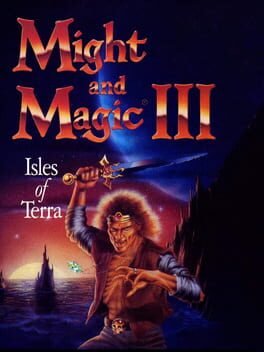
subdirectory_arrow_right Might and Magic II: Gates to Another World (Game)
▲
1
▼
 Scorpia is the pseudonym of a video game journalist who was most active from the early 1980's through 2009 and was known for writing controversial and harsh reviews of adventure and RPG games published in Computer Gaming World magazine. One of her most notable reviews was a lukewarm review of Might and Magic II: Gates to Another World that supposedly angered the game's designer, Jon Van Caneghem, so much he wrote a lengthy response defending the game and lambasting the review that was also published in the magazine. He then named an enemy after Scorpia in the game's sequel, Might and Magic III: Isles of Terra. In a 2019 interview with Kotaku UK, Scorpia stated there was never any true bad blood between her and Caneghem, but expressed disappointment that he didn't make the monster she was named after "big and nasty".
Scorpia is the pseudonym of a video game journalist who was most active from the early 1980's through 2009 and was known for writing controversial and harsh reviews of adventure and RPG games published in Computer Gaming World magazine. One of her most notable reviews was a lukewarm review of Might and Magic II: Gates to Another World that supposedly angered the game's designer, Jon Van Caneghem, so much he wrote a lengthy response defending the game and lambasting the review that was also published in the magazine. He then named an enemy after Scorpia in the game's sequel, Might and Magic III: Isles of Terra. In a 2019 interview with Kotaku UK, Scorpia stated there was never any true bad blood between her and Caneghem, but expressed disappointment that he didn't make the monster she was named after "big and nasty".
"Dungeons and Desktops: The History of Computer Role-Playing Games" by Matt Barton (page 189):
https://books.google.com/books?id=qPPRBQAAQBAJ&pg=PA189
Kotaku UK interview:
https://web.archive.org/web/20210206173418/https://www.kotaku.com.au/2019/09/searching-for-scorpia-whatever-happened-to-gamings-first-celebrity-critic/
https://books.google.com/books?id=qPPRBQAAQBAJ&pg=PA189
Kotaku UK interview:
https://web.archive.org/web/20210206173418/https://www.kotaku.com.au/2019/09/searching-for-scorpia-whatever-happened-to-gamings-first-celebrity-critic/
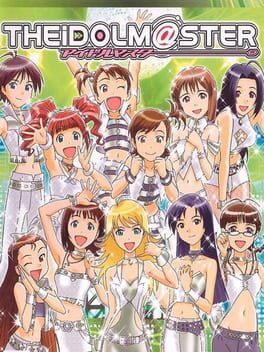
subdirectory_arrow_right The Idolmaster SP (Game)
▲
1
▼
The original arcade release of The Idolmaster had several bad endings that were allegedly received by the first location play-testers so negatively that they were immediately taken out of the game. These endings are referred to as Death endings or "Z-ENDs" which can only be seen by earning a Z grade in the evaluation of an idol's performance, and involve the idols having a final meeting with the player to tell them they are giving up. The tone of each conversation varies with some idols frustratingly yelling at the player, while others will appear severely depressed.
The existence of these endings were considered an urban legend among the game's fans until 2014, when a volunteer for the now defunct fan localization website TLWiki found all of the intact Z-ENDs hidden in the data of the game's PlayStation Portable port The Idolmaster SP, and were later uploaded to Niconico. These endings were uploaded without an English translation, though archived text translations of every Z-END by TLWiki are available and included in the self-source tab.
The existence of these endings were considered an urban legend among the game's fans until 2014, when a volunteer for the now defunct fan localization website TLWiki found all of the intact Z-ENDs hidden in the data of the game's PlayStation Portable port The Idolmaster SP, and were later uploaded to Niconico. These endings were uploaded without an English translation, though archived text translations of every Z-END by TLWiki are available and included in the self-source tab.
Japanese blog post detailing Z-END origins:
https://web.archive.org/web/20200913185821/http://michaelgoraku.blog22.fc2.com/blog-entry-819.html
Ritsuko translation:
http://wayback.archive.org/web/20130311112029/http://tlwiki.org/index.php?title=Idolmaster_SP:MM:41095
Azusa translation:
http://wayback.archive.org/web/20130311113100/http://tlwiki.org/index.php?title=Idolmaster_SP:MM:23679
Yukiho translation:
http://wayback.archive.org/web/20140810135303/http://tlwiki.org/index.php?title=Idolmaster_SP:WS:34987
Makoto translation:
http://web.archive.org/web/20140810064932/http://tlwiki.org/index.php?title=Idolmaster_SP:PS:47298
Ami & Mami translation:
http://wayback.archive.org/web/20130311104110/http://tlwiki.org/index.php?title=Idolmaster_SP:WS:53423
Haruka translation:
http://wayback.archive.org/web/20130311123708/http://tlwiki.org/index.php?title=Idolmaster_SP:PS:6605
Chihaya translation:
http://wayback.archive.org/web/20130311111022/http://tlwiki.org/index.php?title=Idolmaster_SP:MM:29382
Iori translation:
http://wayback.archive.org/web/20130311103835/http://tlwiki.org/index.php?title=Idolmaster_SP:WS:12261
Yayoi translation:
http://wayback.archive.org/web/20130311123902/http://tlwiki.org/index.php?title=Idolmaster_SP:PS:18199
Ritsuko and Azusa Z-ENDs:
https://www.nicovideo.jp/watch/sm24580244
Yukiho and Makoto Z-ENDs:
https://www.nicovideo.jp/watch/sm24563142
Ami & Mami, Haruka and Chihaya Z-ENDs:
https://www.nicovideo.jp/watch/sm24587397
Iori and Yayoi Z-ENDs:
https://www.nicovideo.jp/watch/sm24517297
https://web.archive.org/web/20200913185821/http://michaelgoraku.blog22.fc2.com/blog-entry-819.html
Ritsuko translation:
http://wayback.archive.org/web/20130311112029/http://tlwiki.org/index.php?title=Idolmaster_SP:MM:41095
Azusa translation:
http://wayback.archive.org/web/20130311113100/http://tlwiki.org/index.php?title=Idolmaster_SP:MM:23679
Yukiho translation:
http://wayback.archive.org/web/20140810135303/http://tlwiki.org/index.php?title=Idolmaster_SP:WS:34987
Makoto translation:
http://web.archive.org/web/20140810064932/http://tlwiki.org/index.php?title=Idolmaster_SP:PS:47298
Ami & Mami translation:
http://wayback.archive.org/web/20130311104110/http://tlwiki.org/index.php?title=Idolmaster_SP:WS:53423
Haruka translation:
http://wayback.archive.org/web/20130311123708/http://tlwiki.org/index.php?title=Idolmaster_SP:PS:6605
Chihaya translation:
http://wayback.archive.org/web/20130311111022/http://tlwiki.org/index.php?title=Idolmaster_SP:MM:29382
Iori translation:
http://wayback.archive.org/web/20130311103835/http://tlwiki.org/index.php?title=Idolmaster_SP:WS:12261
Yayoi translation:
http://wayback.archive.org/web/20130311123902/http://tlwiki.org/index.php?title=Idolmaster_SP:PS:18199
Ritsuko and Azusa Z-ENDs:
https://www.nicovideo.jp/watch/sm24580244
Yukiho and Makoto Z-ENDs:
https://www.nicovideo.jp/watch/sm24563142
Ami & Mami, Haruka and Chihaya Z-ENDs:
https://www.nicovideo.jp/watch/sm24587397
Iori and Yayoi Z-ENDs:
https://www.nicovideo.jp/watch/sm24517297
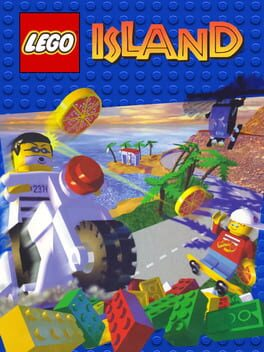
▲
2
▼
In an interview with LEGO Island's creative director Wes Jenkins from around 2013, he revealed that Mindscape fired the game's entire development team the day before the game was released in order to avoid paying promised bonuses:
"Long story but basically – the industry tradition (back then) was that you will receive product bonuses if you stay to the day of product release. The best solution for them (administrators) at the time was to fire everybody the day before release. There's bigger profits and then [sic] could get their investment money back before the product sells… if you don't have to pay bonuses or continued salaries. They also sold [Mindscape] eventually to bigger companies, which ended up in some legal complications… It was explained to me later when we won best of the show at E3 later that year, that "it wasn't personal – it was just business"."

▲
1
▼
The version of GoldenEye 007 that was released was technically a ROM hack of the version submitted to Nintendo for final certification. While the game was undergoing said last-minute testing, an issue was discovered with the game's memory that caused glitches in the textures featured in the Frigate level. To combat this, programmer Mark Edmonds wrote a tool to extract the game's code and data from the ROM, adjusted the hex values in the game's memory to improve the performance in the level, recompressed it, and directly added it back into the ROM image without recompiling. This version was sent back to Nintendo and certified for release as the final version of the game.
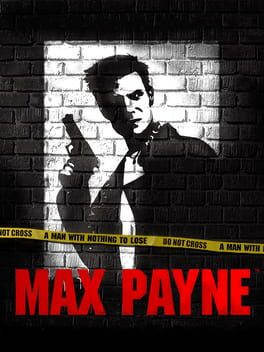
▲
1
▼
Due to lacking the sufficient budget needed to hire actors, the staff, interns and associates of Remedy Entertainment ended up lending themselves to the likenesses of many of the game's characters. Most notably creative director Sam Lake provided the face model for Max Payne, and many of his relatives ended up being part of the game's cast, including his parents who posed in multiple shots as Nicole Horne and Alfred Woden.

subdirectory_arrow_right Donkey Kong Junior (Game)
▲
1
▼
The development of the first Donkey Kong game was outsourced by Nintendo to Ikegami Tsushinki, a company who is believed but not confirmed to have previously worked with Nintendo on several of their early ventures into arcade games. They produced and sold to Nintendo somewhere between 8,000 and 20,000 printed circuit boards for Donkey Kong, and it is believed that Nintendo went on to copy an additional 80,000 boards from this batch without Ikegami's permission. Despite the sale, because no formal contract was known to have been signed between the two companies, Ikegami owned the source code to Donkey Kong as they had created it, and never sent it over to Nintendo.
In order to create a sequel on the coattails of the success of the first game, Nintendo employed subcontractor Iwasaki Giken to reverse-engineer Donkey Kong so Nintendo’s staff could develop the game's sequel, Donkey Kong Jr. Should this narrative be verifiably true, this would make Donkey Kong Jr. Nintendo's first "in-house" video game created by themselves without any assistance from outside development companies. Ikegami viewed this use of the source code as blatant copyright infringement, and sued Nintendo in 1983 for ¥580,000,000 (around $91,935,800). A trial in 1990 ruled that Nintendo did not own the source code to the original Donkey Kong, and the parties settled out of court the same year for an undisclosed amount.
In order to create a sequel on the coattails of the success of the first game, Nintendo employed subcontractor Iwasaki Giken to reverse-engineer Donkey Kong so Nintendo’s staff could develop the game's sequel, Donkey Kong Jr. Should this narrative be verifiably true, this would make Donkey Kong Jr. Nintendo's first "in-house" video game created by themselves without any assistance from outside development companies. Ikegami viewed this use of the source code as blatant copyright infringement, and sued Nintendo in 1983 for ¥580,000,000 (around $91,935,800). A trial in 1990 ruled that Nintendo did not own the source code to the original Donkey Kong, and the parties settled out of court the same year for an undisclosed amount.
